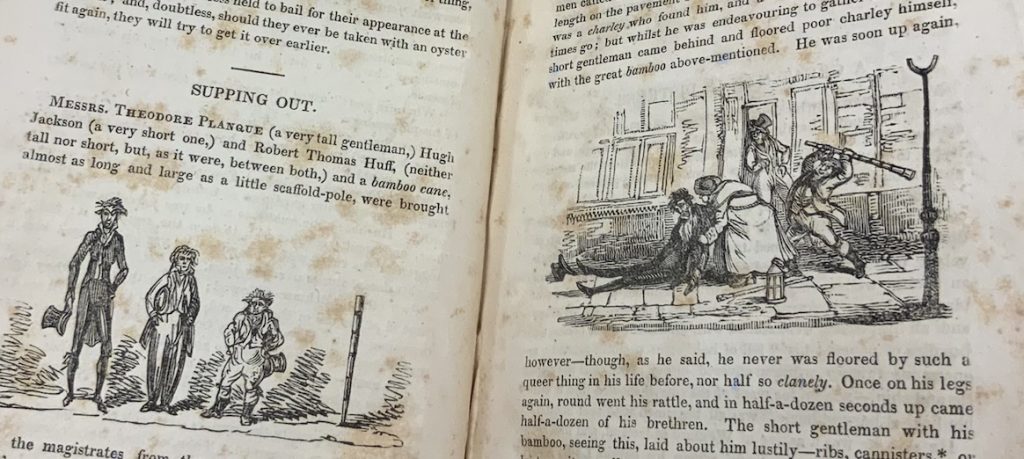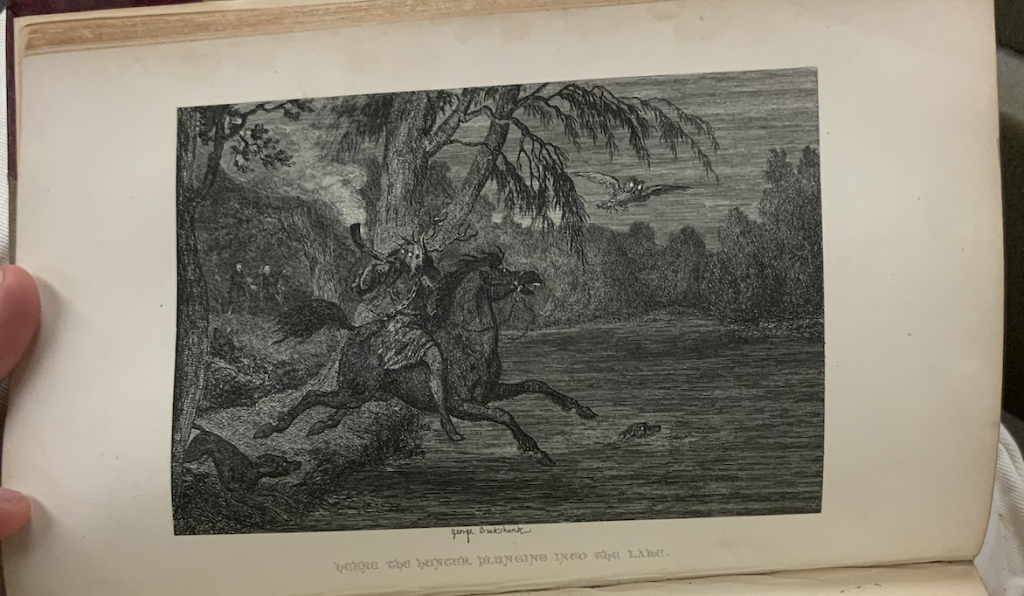By Alejandro Gutierrez
George Cruikshank and William Ainsworth worked together for seven years; during the years they collaborated, George Cruikshank deployed a particular illustrative style that contributed to the art of early Victorian novel illustrations. The artistic style developed during the creation of Jack Sheppard, and the style was termed a ‘vignette,’ which was later renamed the ‘tableaux vivant’ style of illustration. The ‘tableaux vivant’ was often referred to a picture, and the group that require performers to freeze momentarily in their position. The frozen element of the visual highlights the moment of arrested action. Therefore, the two-dimensional plane of picture is analogous to the collective grouping and interaction that performers employ to create a flat scenic plane. The vignette characteristic includes small scale, high in detail, comic or grotesque mood, and the omission of borders. In In the Morning at Bow Street by John Wight (1866-1944), the cut is embedded within the text and it is given without borders, giving the audience the impression that the cut is equal to the text.

“Supping Out” is about three gentlemen who are named by their height: a tall gentleman, a short one, and medium height one, and among them, a cane is present in the illustration to foretell that it will be used as a weapon by one of the gentlemen. In the cut, George Cruikshank reveals the solemnity of sobriety and the recklessness of inebriation. Humorously, too, represents the binary of intoxication to temperance using a homophone device where the text exclaims very “canely,” indicating that ‘canely’ sounds like kindly. Certainly, With George Cruikshank’s plates advancing the story, the audience perceives the correlation between text and image, at times the image pilots the narrative more than the text. In the humorous narratives, the text satirizes casualties to accentuate individuals during their offensive and defensive modes. If you are interested in listening to the audio of the many humorous stories click here and to pair the audio with visual images visit Google Books.

Similar to the vignette in the sense of significance to the narrative, Windsor Castle, the tale of Herne reserves a page for George Cruikshank’s etched plate. The dramatic tableau illustrates ‘Herne the hunter plunging into the lake’ with the use of finished lines, shadows, and backdrops that elicits details significant to the narrative onto the reader’s mind, which are not present in the text, insofar the image extends the narrative to richer levels. The narrative composition in frame dramatizes the main action. Where George Cruikshank plates lives, scarcely was the text needed to explain what the dramatic tableau depicted. Not only was the plate an extension to the narratives but also was a tool that initiated the lower class’s literacy. The dramatic tableau style is by far the most appreciated as readers perceived that George Cruikshank was always supplied with the main action of the narrative. To find more about George Cruikshank, visit the UMBC library Special Collections.


 Albin O. Kuhn Library & Gallery
Albin O. Kuhn Library & Gallery